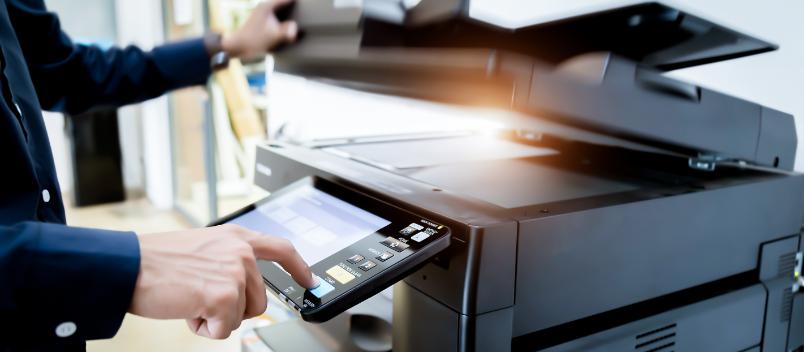The right printer for your business can be a total superstar. It can take your whole operation up a notch, saving you time, money, and maybe even a few headaches. Imagine churning out sharp proposals that wow clients, printing marketing flyers that grab attention, and keeping your office running smoothly with organized documents – all thanks to a reliable printing partner.
But with all the printers out there, it’s easy to feel lost in a jungle of options. Don’t worry, this guide will be your compass and help you figure out exactly what your business needs. By the end, you’ll be a printer pro, ready to pick the perfect one that fits seamlessly into your daily grind.
Consider Your Printing Volume and Needs
First things first, assess your printing needs or habits. How often do you print documents? What kind of documents do you typically print (black and white reports, colorful marketing materials, photos)? A high-volume enterprise will require a robust pr multifunction printer built for heavy-duty printing, while a small business might be better suited with a more compact and budget-friendly option.
Consider Printer Type
When it comes to the different types of business printers available, the two main categories you’ll encounter are inkjet and laser printers.
Inkjet Printers
An inkjet printer is versatile, capable of printing everything from crisp text to brilliant photos. If color printing is essential for your business, these printers might be your best bet.
Laser Printers
Known for their speed and efficiency, laser printers are ideal if you mostly print text documents and large batches. They generally offer a lower cost per page and faster print times.
Choosing between these two will depend largely on what you print and how often you print it.
Evaluate Print Quality and Speed
Print speed and quality are critical. You want the best office printer that produces clear, sharp prints without keeping you waiting. Check the printer’s dots per inch (DPI) rating for quality, and the Pages Per Minute (PPM) rating for speed.
Businesses needing quick, quality prints should look for printers with a higher DPI and PPM rating, especially if book printing is part of your branding tactic. Overall, it’s about finding that sweet spot between speed and quality that matches your business’s pace.
Check The Connectivity Options
These days, wireless connectivity is a must-have for most businesses. Look for a printer that offers Wi-Fi or Ethernet connection, allowing you to print from any device on your network. Some wireless printers also offer mobile printing options, enabling you to print directly from your smartphone or tablet.
Additional Features to Consider

While the core functionalities are crucial, some additional features can further enhance your printing experience. Automatic duplex printing saves paper by printing on both sides, while large paper trays minimize refill interruptions. For small businesses that print on a variety of media types, such as cardstock or envelopes, media versatility is a valuable feature.
Look Into Cost Efficiency
For efficient and effective print marketing, it’s not just the upfront cost of the printer you should consider, but also the long-term expenses like ink or toner costs. Some printers have a low initial price tag but will cost you a lot more in the long run due to expensive cartridges. Check the cost per page and consider opting for printers that support high-yield cartridges to get more prints per cartridge.
Read Reviews and Research Brands
Once you’ve narrowed down your options based on the factors above, it’s time to take a deeper dive. Don’t just skim online reviews – look for in-depth reviews from reputable tech publications and business websites. These reviews will provide valuable insights into real-world performance, reliability, and user experience. Pay close attention to factors like print quality, ease of use, maintenance requirements, and total cost of ownership (TCO).
In addition to reading reviews, it’s also crucial to research different printer brands. Look for manufacturers with a strong reputation for quality and customer service.
Don’t be afraid to compare and contrast different models from the same brand to find the one that best suits your specific needs and budget. Consider factors like warranty coverage, availability of replacement parts and consumables, and the brand’s track record for releasing firmware updates and security patches.
Conclusion
By carefully considering your printing needs, budget, and desired functionalities, you’ll be well-equipped to choose the best printer for your business. Remember, there’s no one-size-fits-all solution. The perfect printer is the one that seamlessly integrates with your workflow and delivers exceptional results, all while keeping costs in check. So, take your time, weigh your options, and happy printing!





